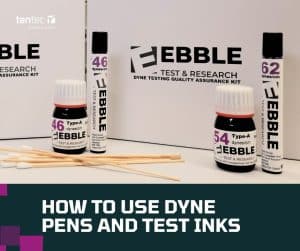
How to use Dyne Pens and Test Inks
Read this to find out the official way to get
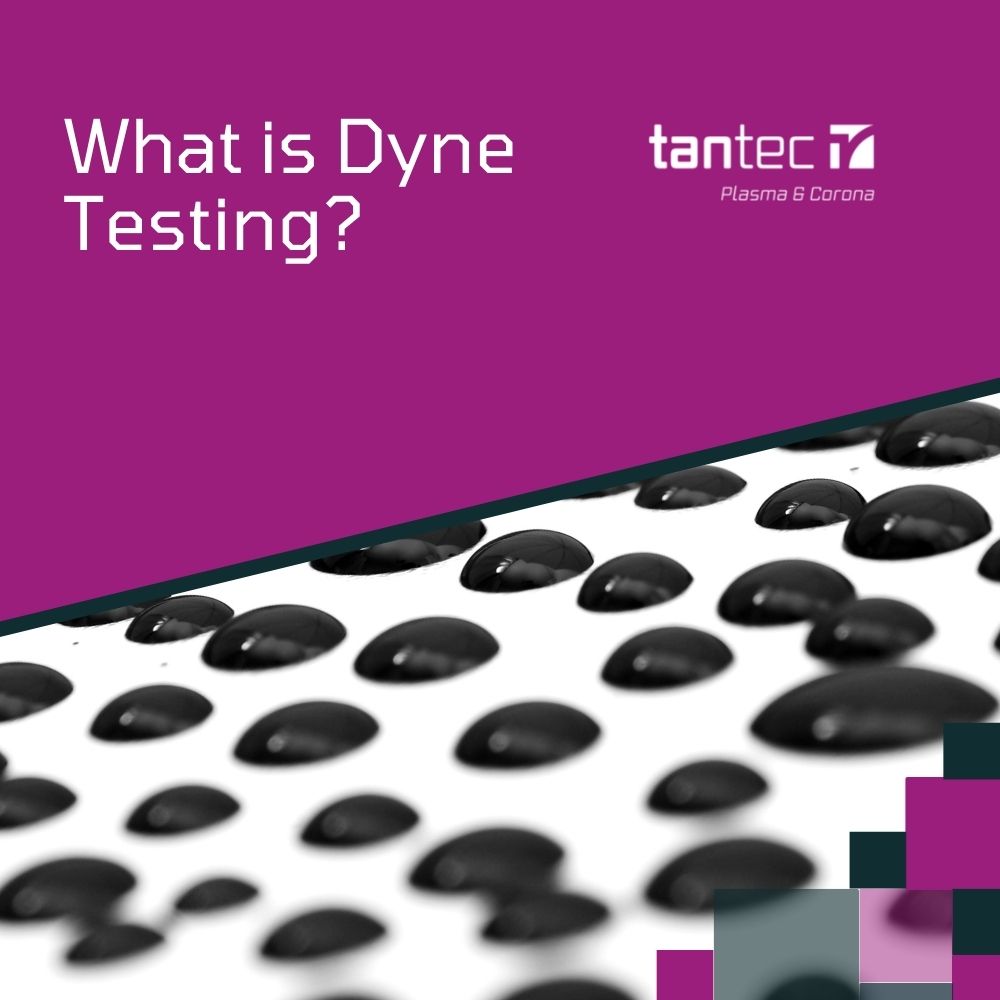
Whether you’re manufacturing vehicles, producing packaging or engineering safety-critical medical devices, the quality of the materials you use is imperative. Modern products are bonded, painted and treated to offer varying characteristics integral to performance. Corona and plasma surface treatment plays a critical role in helping to evolve a material’s surface properties, but how do you know it needs treatment in the first place? Or if the treatment it has been through was sufficient? One of the most effective ways is via the use of Dyne test inks to measure the surface energy. So, how do they work and what are the benefits?
Dyne inks measure the surface energy of a material; all materials have a surface energy and it is this energy that we measure to determine its ability to interact with the rest of the world.
We can test the surface energy to tell us how a surface will react to adhesives, coatings and other bonded materials. Typically a low surface energy material (such as silicone or PTFE) will be difficult to bond to, while a material that’s been treated will have a high surface energy and will bond well. Here is a video from our YouTube Channel on how to use Dyne Inks.
A few typical values for materials are:
| Material | Untreated Surface Energy (mN/m) | Expected Treated Surface Energy (mN/m) |
| PTFE | 19 | 40 to 60 |
| Polypropylene (PP) | 30 | 60 to 72 |
| Polyethylene (PE) | 30 | 60 to 72 |
| Nylon (PA6, PA66) | 38 | 72+ |
| Acrylic (PMMA) | 40 | 72+ |
| Glass | 34 | 72+ |
| Stainless Steel | 32 | 72+ |
We normally measure up to 72 dynes, which is a sensible figure as most things will have excellent properties at this value and the test inks you can use generally go up to this number. In reality, metals especially can go much higher and be many hundreds, if not thousands of dynes if perfectly clean.
Both the untreated and treated values are always variable, they are affected by the structure of the material, the blend of the material with additives, the age of the material and the amount of cross linking among many other factors.
Measuring the surface energy gives you quality information about the surface – it can tell you whether it’s as expected when received, whether you can expect good results for adhesion or whether the treatment or cleaning process is working well.
Both pens and ink bottles work in a similar way; place a line of liquid on to a surface and check the reaction, if the liquid spreads to create a consistent film across the surface for more than three seconds, then the material will have a minimum surface energy in millinewtons per metre (mN/m). However, if the material’s surface energy is lower than the test fluid’s, you’ll see the test ink quickly retreat into droplets which is a failure. You can then determine the exact surface energy via the application of test inks at a range of increasing or decreasing values.
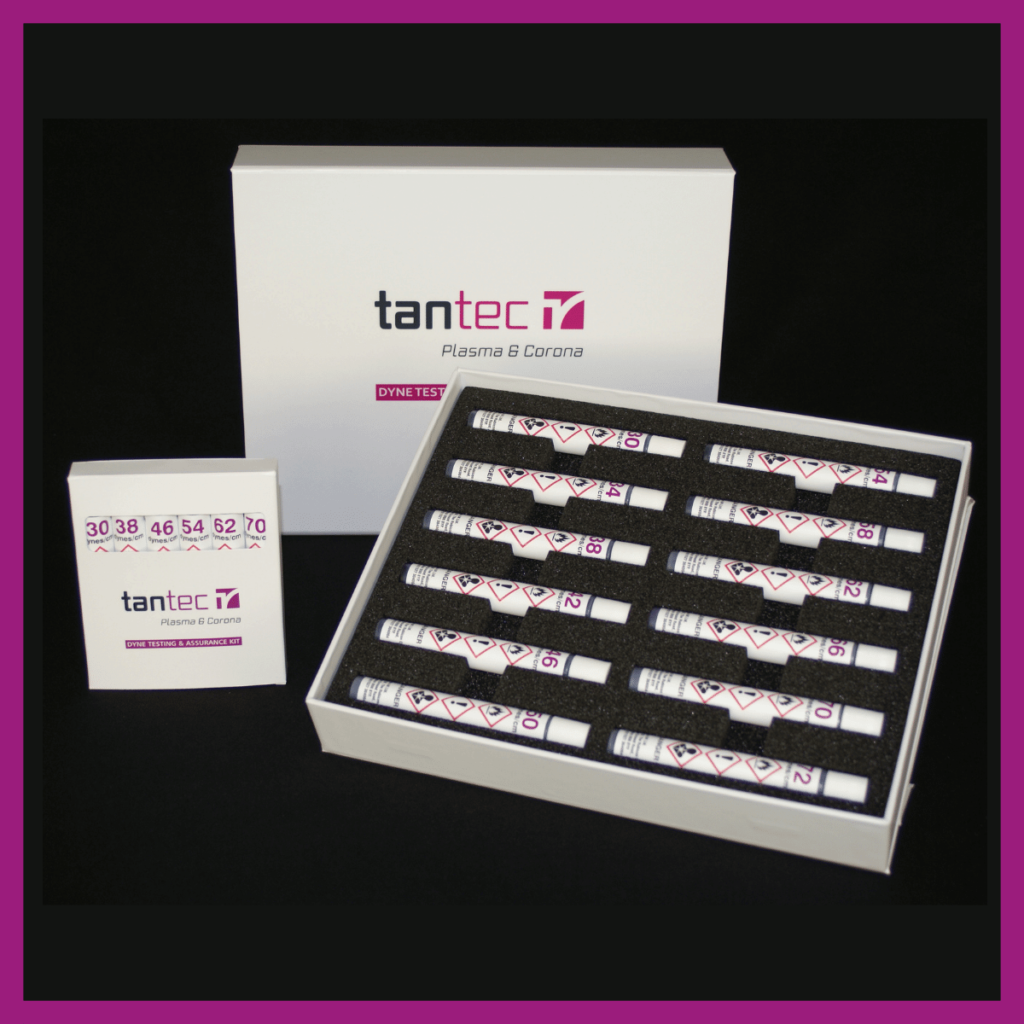
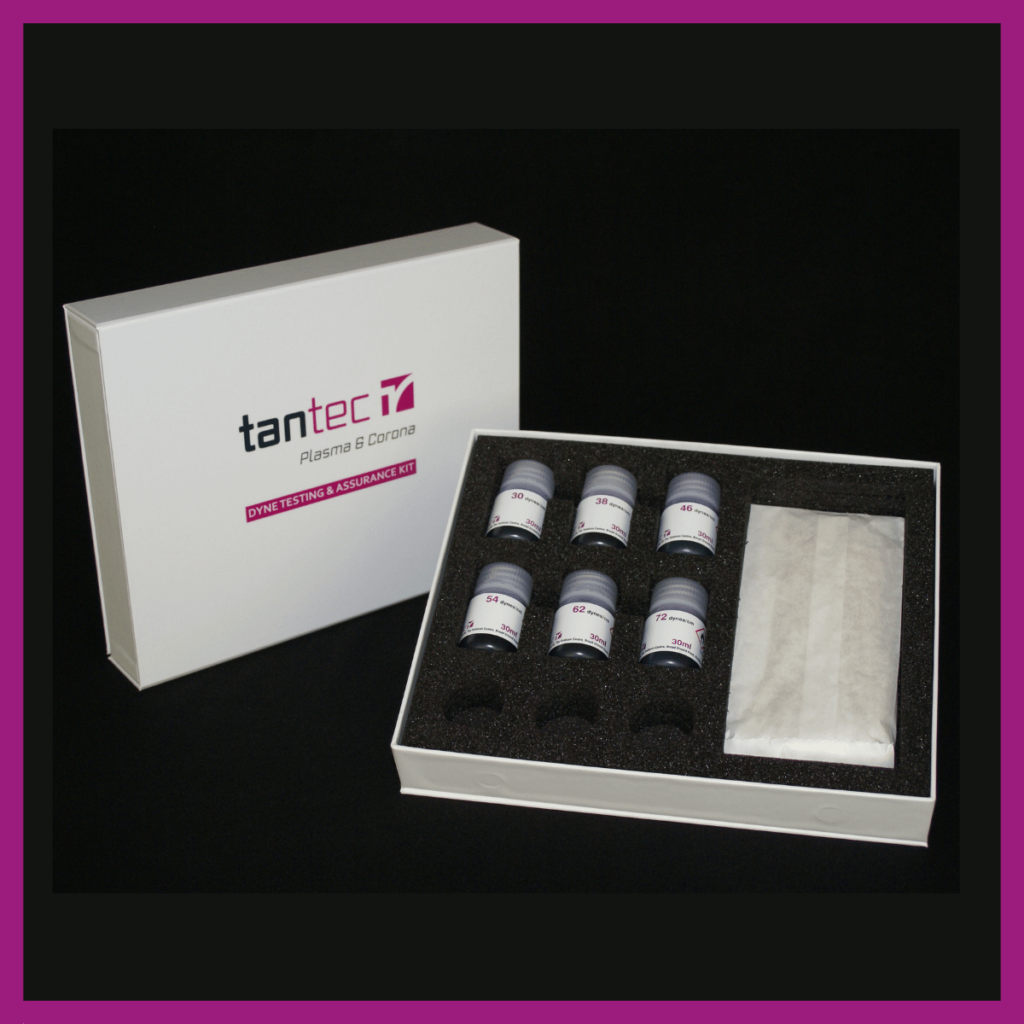
Measuring the surface is usually done in two ways, either using inks in pens, or inks in bottles.
Using a pen is usually more convenient, you simply move the pen across the surface and see the result. This is usually good, but the main problems are that you could be picking up contamination, ruining the pen nib. You could also be putting too much or too little down on the surface because the pressure you apply can vary the output, which can give you a range of results.
You might also see them referred to under various names within the industry, including dyne pens, jumbo test pens, surface energy inks and test inks
Test inks use the same inks, but you apply them using disposable wooden swabs without adhesive binders. This stops contamination being put back in the bottle and allows for easier dosing of the ink on the material. However, they’re not as convenient as pens.
Most people start with pens to get used to testing and then move on to the ink bottles for further testing once they know what values they really need.
Dyne testing offers engineering organisations a wealth of benefits, providing the confidence and information they need to know if their product is capable of performing to the standards they require. These benefits include:
How many other quality assurance processes offer you instant feedback in under three seconds? You’ll be hard-pressed to find many. That’s why so many of our customer’s use this dyne ink testing to help them understand their material’s surface energy, enabling them to manufacture consistent, reliable products.
Forget over-elaborate, expensive technology. Dyne testing offers simple, inexpensive testing that offers accurate results. Engineering organisations around the world use this method as it’s a reliable indicator of a material’s adhesive strength, coating consistency and print quality.
Unlike many other quality-checking processes, dyne testing is a completely non-destructive process. You don’t have to worry about scrapping a part to test if a batch is compliant with your production standards, instead enabling you to maximise yield.
Dyne test inks offer organisation’s a safe, effective way of quality assurance that doesn’t release toxic chemicals into the atmosphere, potentially threatening the safety and well-being of their staff.
Dyne inks and pens are a quick, relatively cheap way of measuring surface energy and require very little training, but they can be subjective and the use of chemicals on a production line may not be perfect for some manufacturers.
The key alternative to inks are systems called Optical Tensiometers; also known as contact angle meters or goniometers.
These systems deposit a droplet of known liquids onto a surface and measure the droplet’s interaction with the surface, measuring its angle of contact. A high contact angle, with the droplet looking like a ball on the surface gives a low surface energy, while a droplet that wets the surface has a low contact angle and a high surface energy.
These systems measure the drops very accurately, normally to multiple decimal places and provide an accurate and repeatable measurement as a documented number. Several measurements can be taken and you can use different liquids to get a bigger picture of the surface.
They are a lot more expensive than dyne test inks, but the consumables are much cheaper so can be beneficial on price in the long run. However, the key advantage is the accuracy and documented values rather than an operator’s interpretation.
Some systems are mobile, while others are benchtop-based so you can choose to measure lineside or within a lab.
Tantec UK is the United Kingdom’s leading provider of surface energy measuring equipment, supporting leading manufacturers in a range of high-technology industries including automotive, aerospace, medical devices and packaging. Our specialists have extensive experience in this field and are available to address any queries, helping you to test effectively and maximise your product’s performance. Contact our team of experts today on 01527 304 004 or info@tantec-uk.com for a confidential discussion about how our surface energy measuring services can benefit you!

Read this to find out the official way to get
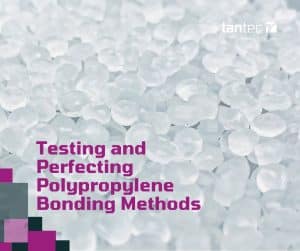
Polypropylene (PP) bonding is traditionally a difficult task due to
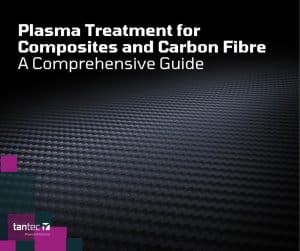
Composites are becoming increasingly important in manufacturing, whether these are
40A Crossgate Road
Park Farm Industrial Estate
Redditch
B98 7SN
Tel: 01527 304 004
Email: info@tantec-uk.com
